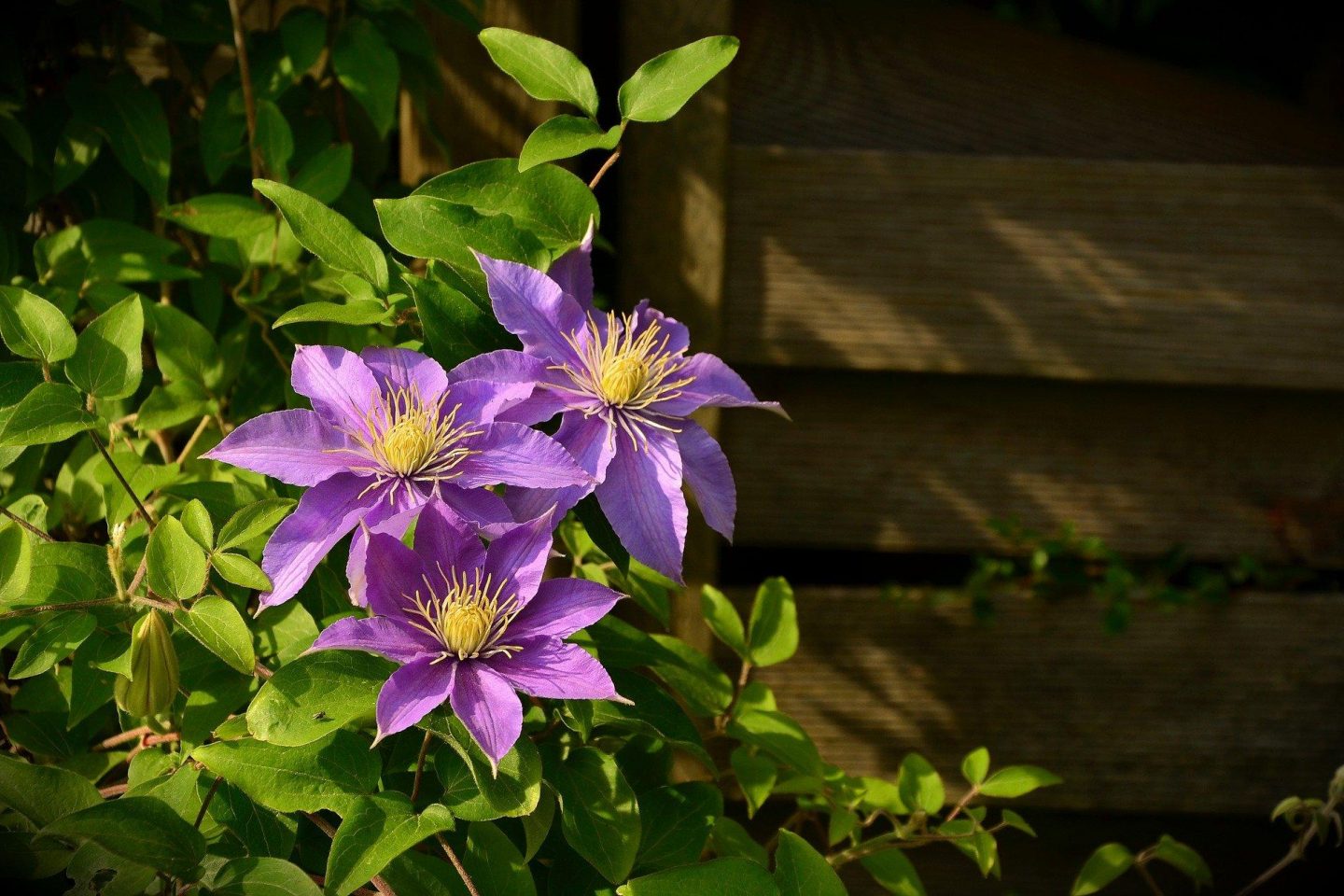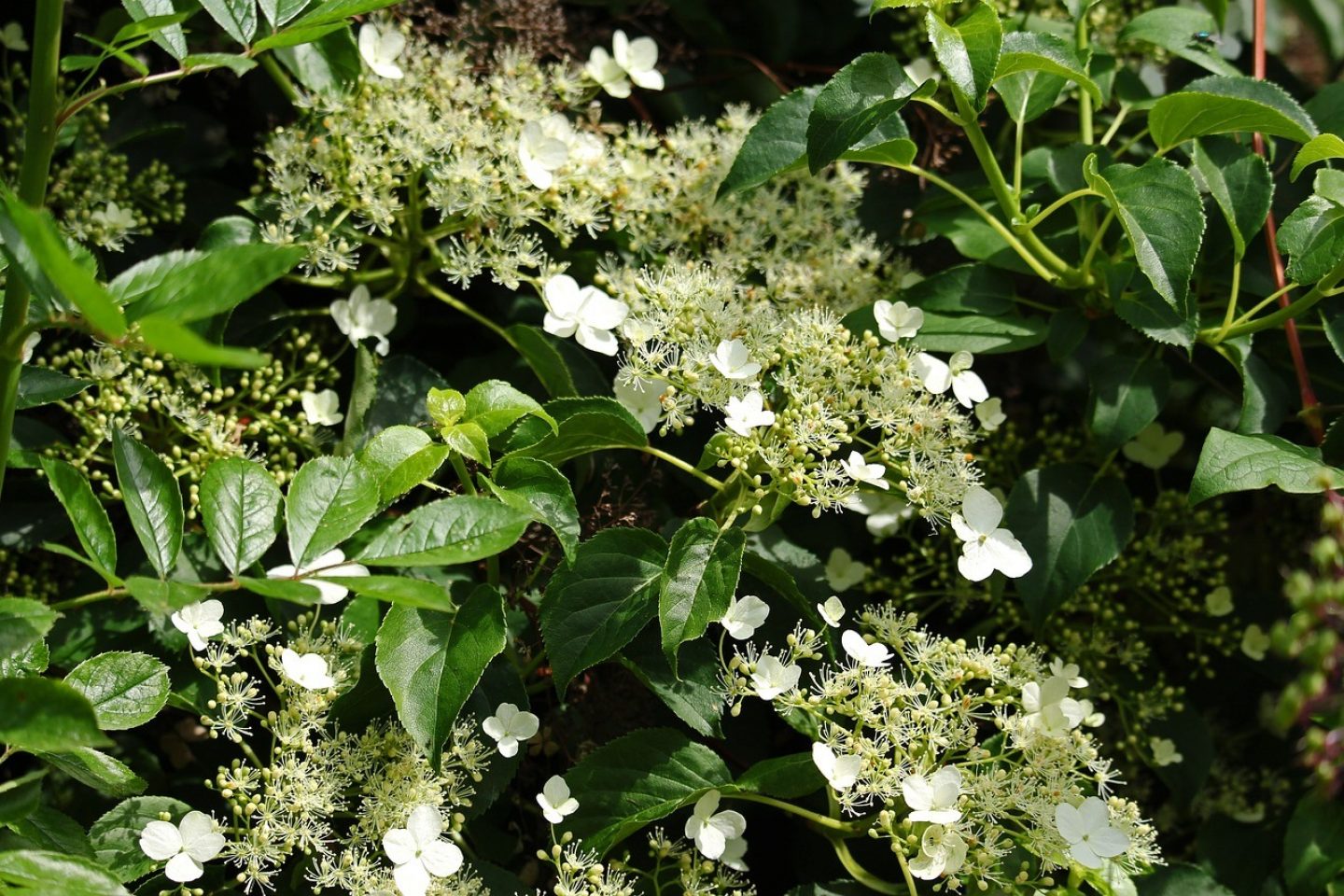Helpful information
Timing: Spring or autumn is generally the best time to plant
Where to do it: Outdoors
Garden space: Large garden, small garden, balcony

Timing: Spring or autumn is generally the best time to plant
Where to do it: Outdoors
Garden space: Large garden, small garden, balcony

Climbing plants are pretty amazing. We are familiar with flowers at ground level, but there is something magical about a plant spreading across walls, fences or even through trees.
The idea of growing climbing plants may seem a little daunting. It’s true some need a little extra care and support. But, they are a fantastic way to encourage nature upwards as well as in the ground.
You can grow climbing plants whether you have a huge garden, small patio, balcony or even around a front door.
How climbing plants climb
Different climbing plants have developed different techniques for climbing. In each case, they are just trying to reach up to the sunlight!
Adapted roots, e.g. ivy and climbing hydrangeas
You can see these along the stems. Using these tiny ‘roots’ they stick to the wall.
These plants will need minimal support as they grow. They are trickier to remove. They can get pretty firmly stuck on!
Tendrils, e.g. runner beans and morning glory
These produce thin curls that are actually adapted leaves that can grab their surroundings to pull the plant up.
These plants will need a structure for their tendrils to grow up, like a trellis or bamboo with string.
Twining stems or petioles, e.g. wisteria and honeysuckle
Here, the stem of the climber wraps itself around the structure it’s climbing.
These plants will need a support, like a trellis or rows of string / thin wire.
Adhesion, e.g. Virginia creepers
These plants have alien-looking pads that help them stick to what they are climbing.
These may need some support as they start growing, but should eventually cling on their own.
Where to grow climbing plants
There are many places you could grow your climbing plants:
If possible, planting your climbing plant into the ground will give the roots the most space.
If you can’t plant in the ground – for example, if you are growing on a balcony or patio – you can grow climbers in a pot. This will restrict root growth and, in turn, the size of plant that will grow. This may be a good thing, particularly if you have a smaller space.
Different climbing plants suit different amounts of sun. For example, honeysuckles love sunshine while some hydrangeas will grow in shade. We have a few different suggestions for plants below. Be sure to think about the amount of sun wherever your climbing plant will be placed.
If you are growing against a wall, leave a good 30-40cm gap between the plant and the wall.
When to plant climbing plants
Generally, autumn or spring is the best time to plant climbing plants.
If you plant in autumn, your climbing plant will get settled in the soil ready to grow the following year.
Do climbing plants damage walls
Some climbing plants cling very strongly and can potentially damage walls. Ivy is a main example. On the plus side, these plants can also protect walls from the elements, like sun and rain.
You may decide you prefer not to grow self-clinging plants like ivy up the walls of your house.

Popular climbing plants
There are many climbing plants to choose from. These are a selection of the most popular:
It's always a good idea to choose plants that suit your growing space, instead of trying to change growing conditions to suit the plant.
Evergreen climbing plants
Some climbing plants will keep their leaves all year around. This is a great way to enjoy continued greenery in your garden. Here are a selection:
Some people have mixed feelings about ivy. It can be an important plant for insects as it is one of the last flowers available to bees as winter gets closer. It provides cover and food for a host of other insects as well, which in turn are food for birds. Sometimes, birds will nest in a dense patch of ivy.

Fast growing climbing plants
If you want to cover a wall or fence quickly, these are some fast growing climbing plants to consider:
Fast growing plants can involve more work when it comes to pruning and maintaining – particularly big, vigorous growers like wisteria. Decide if you might be better off with a slower grower and a bit of extra patience!
Climbing plants for shade (inc north wall)
Even if you have a shady spot, there are some climbing plants that will grow there. These include:
Check the plant label or information online about the specific variety you are interested in. It should say if it will grow in shade or if it needs a sunnier spot.

Climbing plants for sun
There are many climbing plants that will grow happily in a sunny spot. These include:

Edible climbing plants
Climbing plants can provide delicious food produce, as well as being beautiful. Some edible climbers to try include:
These will all need something to support them and for them to cling to as they grow.
There are a few things you can do to keep your climbing plants at their healthy best.
Tying in
Many climbing plants will need tying into a support as they grow – particularly ones that get very tall.
You can use soft string or twine to gently tie plants to a frame or trellis. You can also get thin plastic-coated wire, or find special clips. Try not to use anything too hard as a tie, or it could damage the plant.
Take care not to tie your plants in too tightly.
If your climbing plant gets very tall, tying it in can involve stretching or even standing on a ladder. You could prune your plant so it stays at a more manageable height, or choose a variety that does not get particularly tall.
Pruning
Your climbing plant will probably need pruning to keep it at its best. The right time to prune varies by plant. As a general rule, prune after it has flowered / produced food.
Read our guide to pruning for more advice.
Cut and hold secateurs can be helpful when pruning. These keep hold of the cut stem, instead of it dropping to the ground. You can then put the pruned part straight into your trug or bucket, avoiding having to bend and clear up prunings later.
Propagating
Many climbing plants are good to take cuttings from. This allows you to enjoy the magic of growing new plants for free!
With many, a good way is to take semi-ripe cuttings in late summer or early autumn